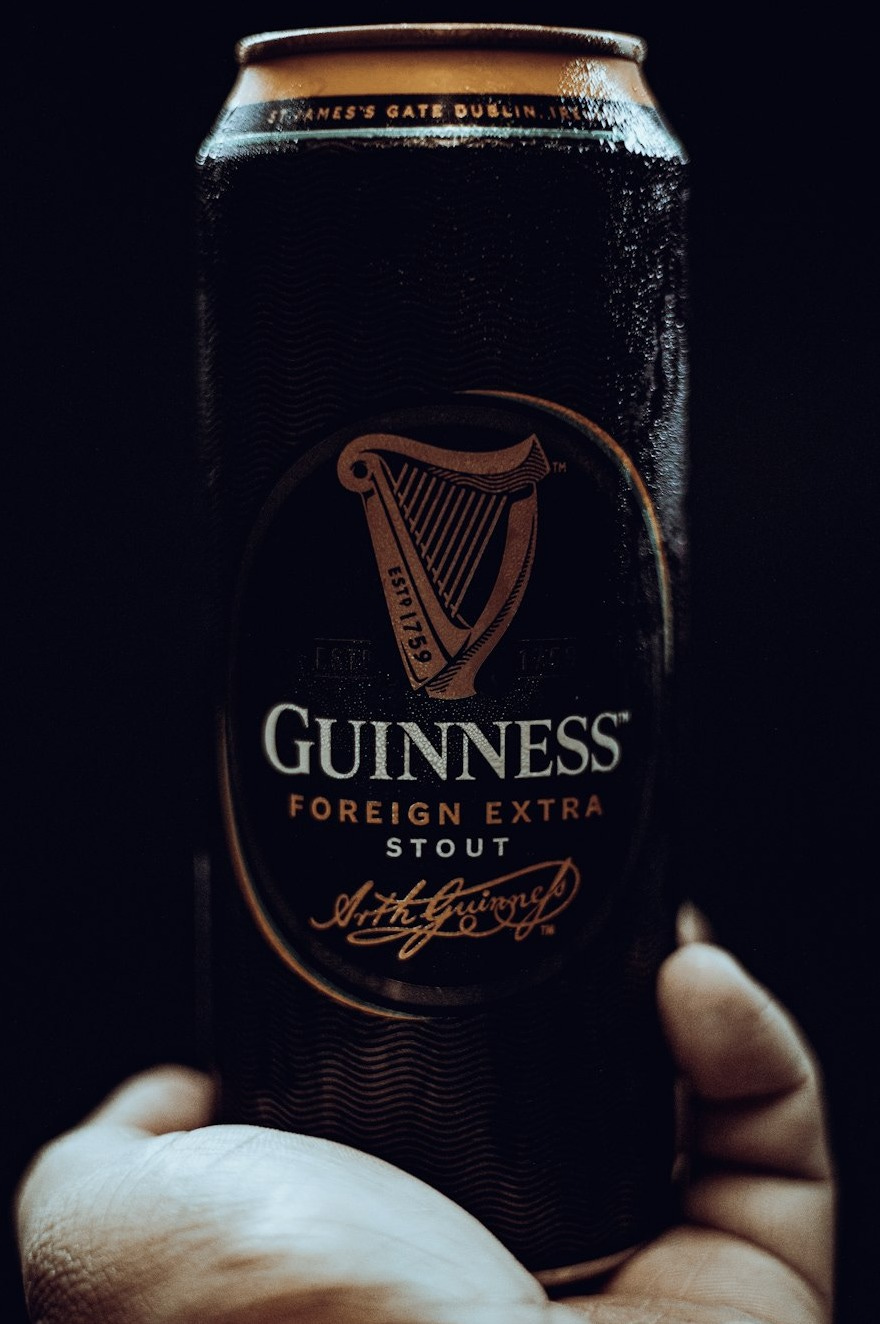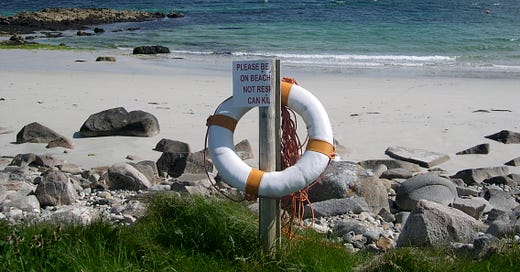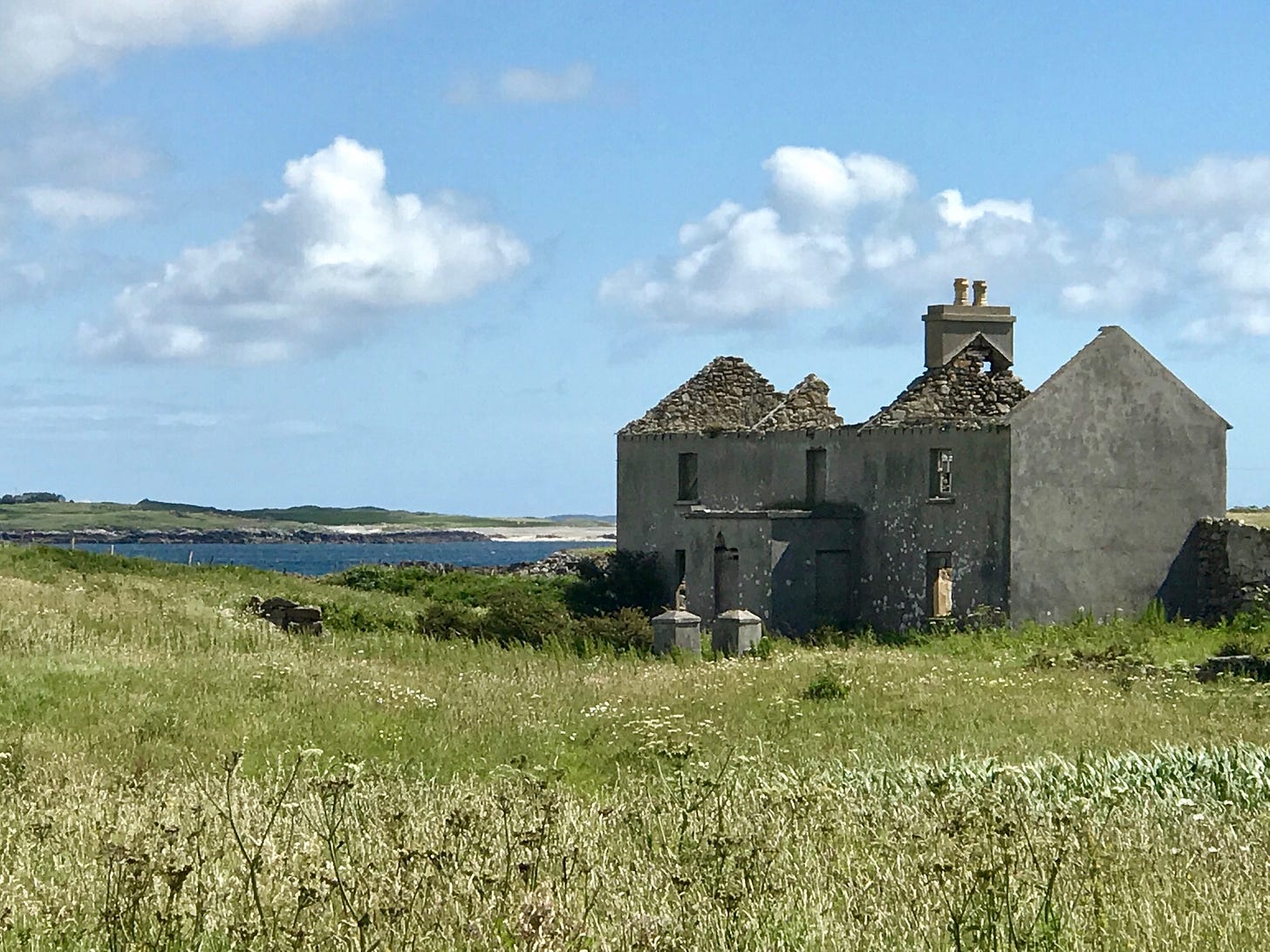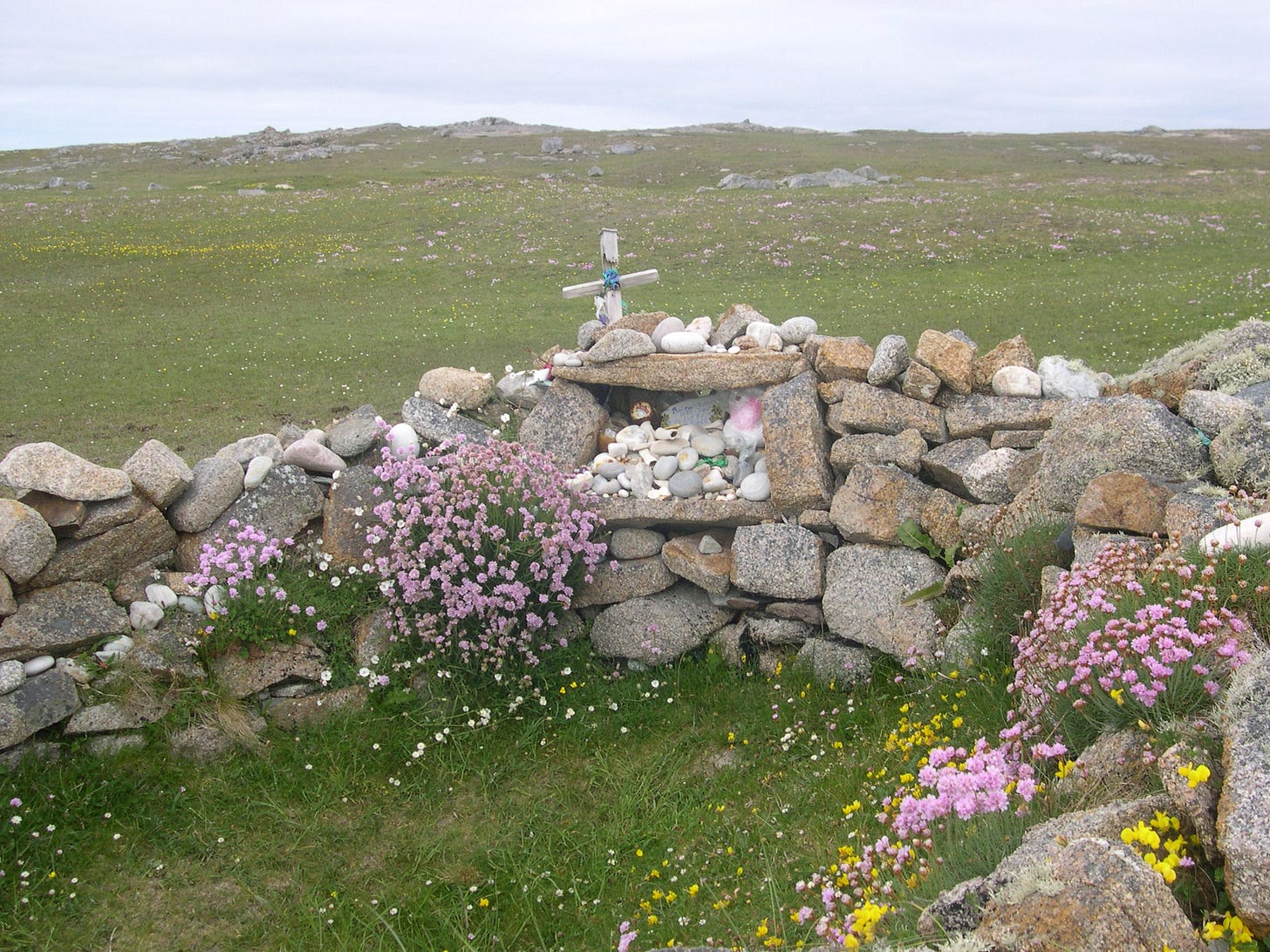]
I coasted my bike down the winding path past Our Lady Star of the Sea Church, the map of Omey Island flapping out of my jeans’ pocket. I looked out over the strand to the tidal island in the distance. Then slowly, the waves calmed and parted, revealing a hard-packed, ridged strand, the water drawing back as if it were commanded by Moses himself.
Omey, a sacred site, was once a land mass attached to the mainland. Some 4,000 years ago, the force of the sea broke through granite and created the island off the western coast of Ireland near the village of Claddaghduff. Omey was flat, treeless, with the Celtic crosses of my ancestors poking up into the overcast sky over St. Brendan’s cemetery.
I reached down and patted the ground. Yes, it was solid. I could ride across, the locals had all assured me, just mind the tides. But an apprehension overwhelmed me that I might be lost here, swallowed by the sea itself.
A few days before, I had bought a tides book at the local hardware store and studied the charts, dates and times. When I had determined the schedule, I stood on this exact spot, expecting the tide to be out, but the ocean was still an ocean. I checked the book. Yes, the tides were supposed to be low at this time. But they weren’t. I waited a good while, but no scenes of Charlton Heston in The Ten Commandments appeared on the shore.
That night at Sweeney’s Pub, I told the bartender my problem.
“You bought a book now, did you?” he said. “To figure out the tides?”
“Well, how am I to know?”
“Next time, call us when you want to go,” he said.
Okay, I thought. I hoped the bartender would know what he was talking about. Once you made it to Omey, the tides only gave you 6 hours before they rushed back in and flooded the strand. Well, going by the book was hopeless, so a few mornings later I called Sweeney’s pub.
“Give me your number,” the bartender said. “I’ll call you back.”
A couple of hours later, he got back to me with the exact times of the comings and goings of the tides.
So, there I was on my bike on my way to Omey, a backpack on my shoulders with a sandwich and a bottle of water. If I made it to Omey and the tides rushed in, I would be forced to spend the night here in one of these abandoned houses, the roof leaking rain. I was told that Omey only had one inhabitant, a man who used to do stunts in the movies. I wasn’t sure he would be receptive to a visitor.
I leaned my bike up against the wall of an old estate house and took the island on foot, past the cemetery with my ancestors stacked up on top of each other in one burial plot, past the ruins of the St. Feichin’s parish church, then past several ancient middens, dating back to 1000-1500 A.D. with their dumps of shells and an occasional human finger bone sticking out of the rubbish heaps.
I stopped for a few minutes at St. Feichin’s well, a place said to have healing properties, especially for eye ailments. Offerings of buttons and rosary beads, rocks and shells covered the stones. Pedestrians stopped here to bless themselves and pray for good vision during the dark nights of travel on the strand. Occasionally, a traveler would get confused and affected by fóidin mearbhaill or disorientation in the darkness.
I stumbled over numerous rabbit holes and imagined the primitive homes of those described in missionary Asenath Nicholson’s book Ireland’s Welcome to the Stranger on her travels during the Famine.
Here were huts, some of stone and some of mud; and here too were habitations dug in the sand, as rabbits burrow, and whole families live therein. An aperture to crawl in admits the inmates, serving as door, window, and chimney.
All forms of livestock lived inside these huts with their families, from dogs to pigs, chickens, sheep and lambs, goats and kids. The humans highly valued their farm animals and kept them near them, safe and protected.
I neared the main road and spied a small caravan that seemed burrowed into the sand, a thick tie-down strap looped over its roof to keep the trailer from blowing away in a gale. The sides of the caravan were battered, bent and worn, but tubs filled with vegetables and bright flowers told me someone lived here who cared.
And that someone crawled out of the front door with a long thin face that was both friendly and open. He said his name was Pascal, and he invited me for tea. Inside, his caravan was a bachelor’s pad, with dirty dishes piled high in the sink and grease clinging to the walls. Pascal was clearly ill, but functioning along here by himself in a way that seemed to suit him. I gave him my card that carried the seal of the State of Iowa.
“Oh, ho!” he stood and bowed low before me. “If it isn’t the Poet Laureate!”
Pascal told me he had been born on Omey, and then taken to Wales for schooling. In adulthood, he travelled the world as an adventurer and stunt man. He’d been in John Huston films and Butch Cassidy and the Sundance Kid. He’d fallen from cliffs, jumped from moving cars, and had given sword fighting lessons to Peter O’Toole for a production of MacBeth. He founded a stunt school in Dublin.
In 1841, Omey had a population of 397. It was down to 70 when Pascal was born, and by 2015, the island had a population of 1. But Pascal returned here for beauty and memories, to find a place of peace before he died.
We sat and talked, drinking our tea. He even found a little biscuit to offer me. Then year after year this became our ritual. Every summer when I came to Ireland, I tried to pay a visit to Pascal on Omey.
My card in his hand, Pascal always bowed to me before he poured my tea.
Then we sat together in his caravan. He told the story of the natural history of the island, how he could lie awake at night and hear the corncrakes, how he observed the changing textures and colors of the strand with the winter storms and gales blowing across the sand. He told how artifacts have been found on the island by residents and archeologists alike, from a small Neolithic axehead to a rare twelfth century kite brooch. And he told how he studied the moon and knew the rhythm of the tides.
“If someone wants to know the tide schedule, they call Sweeney’s and the pub calls me,” Pascal said.
“Is that so?” I said.
Lonely? Not a bit. Every night, the tides out, Pascal walked over to Sweeney’s to drink a pint with friends, then found his way back in the dark. Some nights he needed to get some help from St. Feichin. He often stayed too long at the pub, the tides rising and the fóidin mearbhaill setting in before he made it across to Omey.
And if your eyes were good, you might sit snugly in Sweeney’s and catch a glimpse of Pascal splashing across the strand. You might raise a glass with a toast to him Sláinte, the moon casting its light on the water up to his waist, Omey’s only resident heading home, holding a pint of Guinness above the waves.

Buggyy Land is a proud member of the Iowa Writers Collaborative. Paid subscribers, come join us for The Office Lounge, a once-a-month online conversation.
Noon, CST. January 31, 2025
https://us06web.zoom.us/j/87111036189
Check out our writing in the IWC Sunday Round-Up and the IWC mid-week Flipside Edition.









While hiking the Dingle Peninsula in Ireland I stopped at a pub near Brandon Point. The barmaid and a local gentleman were the only ones in the pub at the time. After I rested a bit and finished my Guinness I asked the local if I was correct in guessing that it would take me around an hour to walk to the next village. He raised his glass and told me I was correct but if I had another Guinness it would only take me 45 minutes.
LOL, You bought a book to learn the tides. Sweeney's Pub and Pascal, connecting. Love it!